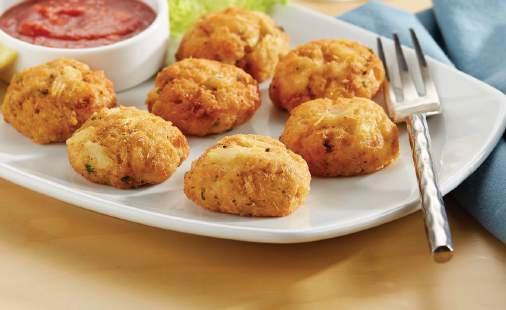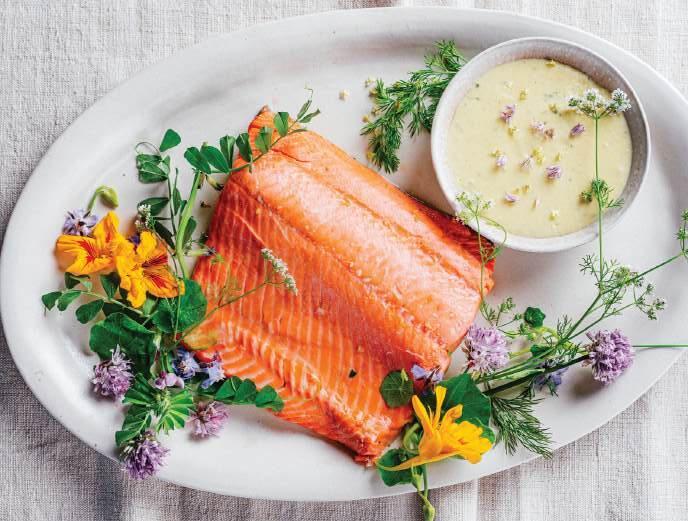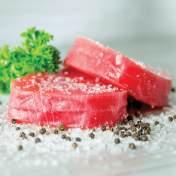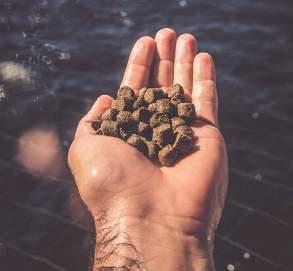












As trade policies under U.S. President Donald Trump continue to evolve at a rapid pace, the only constant that seems to remain is economic uncertainty.
In this fall 2025 edition of SeafoodSource’s Key Buyer Industry Update, we explore how the seafood industry is navigating these uncertain times by adapting to shifting trade conditions and tapping into emerging consumer health and wellness trends to stay relevant.
As larger seafood companies adjust to the changing tariff landscape, smaller firms –without the same negotiating power or market insight – continue to struggle with rising shipping rates and a lack of clarity about the future. Meanwhile, U.S. consumers remain uneasy about tariffs, inflation, and the economy, with higher food prices driving many toward home cooking. It’s a shift that could present seafood retailers with an opportunity to reach new audiences, experts say, particularly younger, health-conscious shoppers seeking affordable options.
Riding the home cooking wave are two familiar faces: celebrity chefs Andrew Zimmern and Barton Seaver, who have teamed up to release “The Blue Food Cookbook,” a recipe resource aimed at making seafood more approachable for consumers to cook for themselves.
To keep up with consumer trends, many seafood companies are aligning with the health and wellness movement, highlighting protein in ready-to-eat products like tinned fish and marketing seafood as “clean-certified,” low in mercury, and free of detectable microplastics.
Keep reading to dive deeper into all these topics and more!
Avery St. Onge Content Specialist, SeafoodSource
EXECUTIVE EDITOR
Chris Chase / cchase@divcom.com
CONTENT MANAGER
Madelyn Kearns / mkearns@divcom.com
EDITOR
Nathan Strout / nstrout@divcom.com
COPY EDITOR
Teddy Hans / thans@divcom.com
ASSOCIATE EDITOR
Erin Spampinato / espampinato@divcom.com
CONTENT SPECIALIST
Avery St. Onge / astonge@divcom.com
GRAPHIC DESIGNER
Theresa Slusher / tslusher@divcom.com
DIGITAL ADVERTISING SPECIALIST
Kathleen Montana / kmontana@divcom.com
Diversified
121 Free Street, P.O. Box 7438
Portland, ME 04112-7438
Ph: (207) 842-5606
Fax: (207) 842-5603
PUBLISHED BY
Producer of :
Seafood Expo North America, Seafood Processing North America, Seafood Expo Global, Seafood Processing Global, Seafood Expo Asia, and SeafoodSource
Theodore Wirth President/CEO
Liz Plizga President, Diversified USA
Kate Shagoury Director, SeafoodSource
Mary Fowler Sales Manager, SeafoodSource
Heidi Weeks Sales, SeafoodSource
Kelcey George Marketing Manager, SeafoodSource
Joshua Hodges Marketing Coordinator, SeafoodSource
Ph: (207) 842-5500
Fax: (207) 842-5505 divcom.com
Copyright© 2025 Diversified PRINTED IN U.S.A.




ERIN SPAMPINATO
KEARNS




Ready to replace EPS/Styrofoam packaging?
As a retailer or foodservice operator, you know your customers want the freshest seafood. But they also care about environmental impact.
That’s where DryPack comes in. Our packaging is designed to keep seafood fresh throughout its journey to your shelves. Made from fully recyclable cardboard, DryPack not only ensures the highest quality but also meets the growing demand for environmentally responsible solutions.
With DryPack , you can con dently o er your customers the freshness they expect while demonstrating your commitment to sustainability.
• Reduces supply chain costs
• 100% recyclable
• Water-resistant
• 40+ hours below 40°F with ice*
• Pallet-adapted, at on delivery
• Proven over nearly two decades in Europe
*Based on DS Smith internal testing
Join the movement towards a sustainable future with packaging that prioritizes both freshness and the environment. Scan Me

BY ERIN SPAMPINATO

THE GLOBAL SHIPPING AND LOGISTICS sectors appear to be acclimating to the reality of long-term uncertainty after a year of postponed investments and quick decisions made in response to rapidly changing U.S. policies.
For the past year, shippers and logistics stakeholders have been watching the administration of U.S. President Donald Trump closely and, as a result, have moved cargo quickly when favorable tariff conditions have presented themselves.
Early in 2025, for instance, shippers rushed their goods into the U.S. market in anticipation of high tariffs that had been announced on Chinese imports, as well as suggested “reciprocal tariffs” that Trump would not implement for another few months. Rates for containers went up, and small businesses without the resources to hold their goods in the U.S. were particularly affected
Adding to the uncertainty was the U.S. Trade Representative’s (USTR) proposal in March to charge Chinese-built and operated ships each time they entered U.S. ports. At the time of the announcement, experts raised concerns about the unintended costs of such a policy, even as they acknowledged that rebuilding the American shipbuilding industry was a worthy goal.


A Mediterranean specialty in high-end European markets, our Dorade (Sea Bream) has sophisticated flavors and versatility, combined with a mild flavor making it a great addition to any product line.
Origin / Farmed: Turkey

Flaky texture and skin that crisps up beautifully.
A staple in upscale white-tablecloth restaurants.
NETUNO is a wholesale seafood distributor, supplying annually to retailers, supermarkets, restaurants, other wholesale and foodservice distributors on four continents. We connect our customers with the best ocean has to offer while remaining conscious of the environment and our practices. We offer a wide selection of products such as Branzino, Lobster, Ahi Tuna, Calamari & much more!


Supply chain expert Sunderesh Heragu, who is a professor at Oklahoma State University and the president of the Institute of Industrial and Systems Engineers (IISE), agreed that such a plan would likely increase consumer costs and advocated for a “multi-pronged solution, ” which involves strengthening trade relations with allies, cutting regulatory red tape, and providing subsidies for the American shipbuilding industry. Only then, he said, should the USTR consider imposing fees on Chinese vessels.
The proposal stirred much confusion in the shipping industry, where uncertainty over what constituted a “Chinese-owned” vessel was provoking industry stakeholders to “loo[k] for ways to map their risk … rather than wait for enforcement,” Reed Smith Partner Leigh Hansson told SeafoodSource.
Hansson advised shippers to use extreme care about how they moved their products if and when such policies were enacted.
“Shipowners need to assume a cautious approach – if there [is] any material Chinese control in a vessel’s structure,” she said.
This bombardment of new and rapidly shifting information caused shippers to make quick decisions, but by late summer, shippers became more inured to the continued uncertainty and were less willing to respond by quickly moving product. Subsequently, July and August saw declines in rates and cargo tonnages, with experts predicting that the downturn would continue into what has traditionally been peak shipping season – between the start of the U.S. school year and Christmas.
This has helped big businesses establish some sense of normalcy, but Xeneta Chief Analyst Peter Sand said that higher costs
were still being absorbed by “smaller shippers who may not have the same negotiating power or market insight to push back against increasing rates.”
“These smaller shippers face a different reality, and their nervousness is seeing them pay the higher rate,” he said.
Troy Turkin, CEO of Weston, Florida, U.S.A.-based Supreme Crab, told SeafoodSource in July that the situation was especially complex for importers of rare or luxury perishables like crab, some species of which are only found in a few locations worldwide.
UNTIL REGULATORS GIVE CLEARER DEFINITIONS, THE INDUSTRY IS OPERATING IN A ZONE OF UNCERTAINTY.
– LEIGH HANSSON, REED SMITH
“Working in imports right now with Asia is good if you had a set of long dark hair to begin with,” he said. “I keep seeing mine getting grayer and grayer from this ordeal.”
In September, he said that the situation has remained opaque and that it’s clear given “the geopolitical environment” that “uncertainty ahead isn’t going to be gone anytime soon.”
Reed Smith’s Hansson agreed.
“Until regulators give clearer definitions, the industry is operating in a zone of uncertainty,” she said.




p
Nothing makes a celebration more special than a touch of caviar. Echo Falls, the nation’s leading producer of premium smoked salmon, is expanding and improving its specialty seafood offerings with new caviar packaging and a new flavor that everyone loves –wasabi! This flavor combination layers the rich, briny flavor of salmon roe with the fresh, clean punch of wasabi, perfect for parties and for




BY MADDIE KEARNS
The summer sun has set for 2025, and despite the promise of pumpkin spice and National Seafood Month accompanying the new autumn season, consumers are still feeling apprehensive at the grocery store.
MANY FACTORS are contributing to that unease for North American shoppers, particularly the impact on prices that tariffs have, and will likely continue to have, through the remainder of the year.
“Incremental cost pressures may emerge, influenced by product reformulation initiatives, indirect tariff effects, and market uncertainty,” 210 Analytics Principal AnneMarie Roerink told SeafoodSource in September.
According to FMI – The Food Industry Association, 57 percent of consumers revealed at the beginning of September that they are either “very” or “extremely” concerned when it comes to the effects of tariffs on global prices.
“Grocery shoppers’ perceptions of 2025 waned over the course of the summer,” FMI Vice President of Research and Insights Steve Markenson said. “Some shoppers continue to have positive perceptions of how things are generally going (39 percent, down from
2025 GROCERY SHOPPERS’ PERCEPTIONS WANED OVER THE SUMMER
39% OF SHOPPERS HAD POSITIVE PERCEPTIONS
36% OF SHOPPERS OFFER NEGATIVE PERCEPTIONS
– STEVE MARKENSON, FMI














42 percent in June), offering descriptions such as ‘optimistic,’ ‘hopeful,’ and ‘good.’ But almost as many grocery shoppers offer negative perceptions (36 percent, up from 34 percent in June), using descriptions such as ‘worried,’ ‘anxious,’ ‘concerned,’ ‘depressed,’ ‘pessimistic,’ ‘frustrated,’ and ‘scared.’”
These latter sentiments of angst and uncertainty have grown “over the course of the long, hot summer,” Markenson added.
“Early in the summer, grocery shoppers shared concerns about the impact of tariffs, which continues to be strong. Now, shoppers’ concern is focused on an expanded list that includes access to accurate information about food safety, vaccines, and medication costs,” he said.
Responding to Consumer Price Index (CPI) numbers showing a 0.6 percent monthly increase in food-at-home prices for August released by the Bureau of Labor Statistics, FMI Vice President of Tax, Trade, Sustainability, and Policy Development Andy Harig said “the rise in grocery prices after remaining flat in July is likely a result of significant production cost increases in July flowing through the supply chain.”
labor availability, and consumer purchasing power.”
The big three current concerns for consumers heading into the fall are the U.S. economy, inflation, and rising food prices, per FMI. Markenson said that “macro issues such as the ongoing wars in Ukraine and the Middle East, decreased availability of crops due to weather, and decreased availability
and a robust back-to-school shopping season,” NRF President and CEO Matthew Shay said of the data. “Spending was supported by lower fuel costs, tax-free holidays, and consumers buying products before tariff increases take effect. We may be seeing inflationary impacts from tariffs since recent data shows price increases in commodity goods. Even with weaker

...saying they do feel in control of their grocery budget – STEVE MARKENSON, FMI

“Food price inflation continues to experience challenges driven by input costs and market uncertainties,” Harig noted. “As an industry committed to ensuring access to affordable, safe, nutritious food, we are encouraged by the Trump administration’s recent executive order establishing a zerotariff rate for country-specific products if certain conditions are met. We are hopeful this positive step will lay the groundwork for broader and more favorable trade conditions. However, we are keeping our eye on other economic pressures that can impact production costs, supply chains,
of low-wage agricultural workers” are also on shopper radars.
Despite all this, however, “shoppers remain resilient, with 81 percent saying they do feel in control of their grocery budget,” Markenson added.
In August, the National Retail Federation (NRF) identified, via the CNBC/NRF Retail Monitor, spending growth as “consumers stocked up on school supplies and tried to beat rising tariffs that could be beginning to affect prices.”
“Consumer spending rose again in August, fueled by a still-stable consumer
job growth than many expected, employment remains stable and at a high level, giving consumers the ability to spend thoughtfully on household priorities. Nonetheless, consumers are preserving spending power by cutting back on less essential services.”
Even amid anxious economic times, consumers are still poised to shell out during the holidays, according to DNR Sales and Marketing Strategy Advisors President Jason Resner.
“Seafood should particularly see an increase this year as long as retailers do not shy away from advertised promotions due to the retail being higher,” Resner said. “Although overall volume will be down, the increased sales will unfortunately be driven via inflation on both regular retails as well as promotional.”
When it comes to seafood, Roerink also forecasts similar or slightly elevated holiday sales compared to last year in terms of both value and volume, but only time will tell.










“Typically, uncertainty in the marketplace leads to consumers spending with more restraint. We’re certainly seeing that. Consumers are still preparing more meals at home compared to buying restaurant food,” Roerink said.
With more meals being eaten at home, seafood retailers have an opportunity to target certain consumer demographics. Younger generations, according to FMI Marketing Manager Madeline Torrisi, are great groups to engage.
“Despite assumptions, Gen Z isn’t shying away from the kitchen,” Torrisi said. “In fact, they’re the generation that enjoys meal preparation the most compared to boomers, Gen X, and millennials. Over half of Gen Z (51 percent) say they “like” or “love” meal preparation, compared to 46 percent overall. Only 6 percent see it as a chore, and just 11 percent would prefer not to do it at all. This demonstrates a genuine enthusiasm for getting hands-on in the kitchen.”
While “Gen Zers cook meals at home slightly less often than other generations,” these consumers stand to increasingly engage in home-cooking as they age, Torrisi noted.

OVER HALF OF GEN Z
51%
say they “like” or “love” meal preparation compared to 46 percent overall.
“Only 52 percent of Gen Z cooks a meal at home at least four times a week, compared to 62 percent of shoppers overall. For context, just 11 percent of Gen Z cooks every day, while boomers are most likely to cook daily at 26 percent. Still, 87 percent of Gen Z cook at least once a week, showing that home cooking is a regular part of their lives,” Torrisi said.
COOKS A MEAL AT HOME AT LEAST FOUR TIMES A WEEK
11%
COOKS A MEAL EVERY DAY 87%
COOKS AT LEAST ONCE A WEEK
Furthermore, retailers can catch a lot of Gen Z and millennial eaters scoping out prepared meal options.
“Gen Z also has clear preferences for how retailers can make meal preparation easier. The top request is for better value food options, with 49 percent of Gen Z citing this as their biggest need. They also appreciate partially prepared meal solutions (27 percent), more ready-to-eat meals (30 percent), and weekly meal plans (31 percent). Gen Z wants convenience, but they also want to be involved in the process, seeking out options that blend ease with the opportunity to cook and customize,” Torrisi said. “While my own kitchen journey leans heavily on convenience, Gen Z is proving that the next generation of shoppers is ready to roll up their sleeves and get cooking. They value family meals, enjoy the process, and want retailers to meet them halfway with affordable, easy-to-prepare options. Whether you’re a millennial who loves avocado toast or a Gen Zer experimenting with meal kits, the future of food is about blending convenience with creativity, and grocery stores have a big role to play in making that happen.”

“The Blue Food Cookbook” aims to educate readers about seafood, build cooking confidence, and provide delicious recipes.
BY CHRIS CHASE

“I’m the product of my parents, and they clammed and pulled mussels out of the jetties and threw a line in the water for striped bass.”
Andrew Zimmern fell in love with seafood nearly 60 years ago on the shores of New York.
Growing up, Zimmern – a chef, James Beard Award winner, and Emmy-winning TV personality – spent several months a year on the ocean and, throughout that time, enjoyed everything it had to offer, including its seafood.
“I’m the product of my parents, and they clammed and pulled mussels out of the jetties and threw a line in the water for striped bass,” he said. “We didn’t call it foraging. We didn’t apply anything other to it than the fun of collecting one’s own food.”
Zimmern said since then, he has spent a lifetime as a lover of food and seafood. In fact, he got his first job ever in a restaurant on Long Island cooking seafood at 14.
Now, at 64, Zimmern said his viewpoint on seafood has evolved over the years, and he got involved in advocating for the industry after Jennifer Bushman – a strategic development consultant for the seafood industry who has worked with several major brands and is a co-founder of the “Hope in the Water” documentary series – sent him some farmed salmon.









“That kickstarted our relationship – and my interest in aquaculture – and the result of that relationship was the production of ‘Hope in the Water,’” Zimmern said.
Zimmern produced the show with his production company Intuitive Content, and during the development of the series, Bushman and Zimmern talked about writing a standalone cookbook that could tell similar stories to “Hope in the Water,” but also stand on its own as a source of both information and recipes. As those discussions evolved, Bushman tapped into the expertise of Barton Seaver, a chef, seafood sustainability advocate, and author of several books related to seafood, including “The Joy of Seafood” and “American Seafood: Heritage, Culture & Cookery from Sea to Shining Sea.”
Seaver said “The Blue Food Cookbook” that resulted from those discussions and months of hard work serves as a means of showcasing what seafood can be to the public.
“Seafood needs a little bit of handholding; it needs champions. Despite the fact that Andrew and I, Jennifer, and others have been champions for a while, we need to keep building new stages to keep giving the same message,” Seaver said.

Seaver said the seafood industry has evolved over the decades he, Zimmern, and Bushman have been involved, as enormous effort from stakeholders the world over has focused on improving the sector in terms of sustainability to the point it’s now capable of being used as a way to solve other global challenges.
“The time is now for a new platform, a new stage, from which to proudly champion and give permission to people to fall in love with seafood in ways that matter to them,” Seaver said. “Every message needs a messenger, and what messenger is better than Andrew. So, I’m thrilled and proud to be invited into his ecosystem and thrilled to see what we can accomplish through this.”
Seaver said the book is meant to be an approachable, friendly overview of the world of seafood that can give consumers confidence in their ability to select and cook such proteins.
“Once people become familiar, comfortable, confident, and competent at the seafood counter, great. They’re hooked; we got them,” Seaver said. “We know that the results are going to be

“The time is now for a new platform, a new stage, from which to proudly champion and give permission to people to fall in love with seafood in ways that matter to them.”
– BARTON SEAVER
self-fulfilling. Once you fall in love with a piece of salmon that you’re comfortable cooking and you’ve got a couple dishes under your belt, it’s now in your repertoire, and that’s the real victory – creating this intrinsic motivation but also that confidence and competence.”
Zimmern said confidence is the top goal above all others with “The Blue Food Cookbook.”
“That includes confidence in understanding how to buy seafood, where to buy seafood, and how to store seafood because you hear disparate answers everywhere,” Zimmern said. “I would hope that they read common-sense language that makes sense in this book. I would want them to be more confident in the kitchen cooking seafood, the result of which would be eating seafood more often.”
Confidence can also come in the form of being courageous and comfortable enough to ask questions of staff at the places providing





“We live in a soundbite culture, and the story of seafood soundbites, though manifesting on a current topic, are based on legacy biases.”
– BARTON SEAVER
seafood and of other people who may know more about it. Zimmern said “The Blue Food Cookbook” was written to inspire that confidence through telling the story of the seafood industry and the products and recipes that occupy it.
our water systems while, at the same time, producing out of them,” he said.
Seaver said there’s a lot of worthy discussion to be had about seafood and its problems, but a lot of that discussion is still tied to outdated views of how the industry operates.
“We live in a soundbite culture, and the story of seafood soundbites, though manifesting on a current topic, are based on legacy biases,” he said. “A lot of these things are these foundational, legacy biases that continue to mire the conversation, even the good conversations about seafood.”
“The Blue Food Cookbook” is meant to be a reset button that brings those discussions into the modern context in which they exist, Seaver said.


“I think and have thought for the last 20 years we can do so much through the stories around the water and the food that comes from it, much more so than we can from land-based agriculture or animal raising because a lot of those stories have been told,” Zimmern said.
Despite years of effort, modern consumers can still be intimidated by seafood and can shy away from it, Zimmern said, especially amid confusing and sometimes conflicting information or major headline news stories like the recent recalls of shrimp related to radioactive material.
“One week it’s radiation, and the next week it’s plastics in fish. It’s unbelievable. ‘Hope in the Water’ was designed as a narrative and a set of stories told by people in their own words who had solutions to waterborne problems that would allow us to protect
Outside the 100-plus pages of information about the industry, “The Blue Food Cookbook” also simply serves as a great cookbook, Zimmern said, with 104 recipes for all types of fish.
“I couldn’t be prouder of it. I’m thrilled with the way the book looks and the way it reads,” he said.
Photography for the recipes in the book was done by Eric Wolfinger, a two-time James Beard Award winner, and so far, over 300 retailers have picked up the new book. HarperCollins has called it a “once-in-a-decade” title, and it has upcoming features scheduled in The New York Times and Food & Wine Magazine.
Bushman said the cookbook was created through the help of a whole team of support, and the hope is that it can break through the publishing space, which often shies away from seafood-focused publications.
“This is an unbelievable best-in-class team with all of the best intentions. That’s really what this book means to all of us,” she said. “You don’t put all of this time and effort nor donate all of your time and effort to a project like this if it isn’t really because you feel like you’re building a narrative that’s a cause for the common good.”








BY AVERY ST. ONGE
As the issue of microplastics and their potential negative health effects gains significant traction in both scientific literature and media coverage, consumers are becoming increasingly cautious about their food sources.

RESEARCH SUGGESTS that microscopic plastic particles are near ubiquitous and virtually unavoidable , but special attention has been paid to their presence in seafood.
Scientists have detected microplastics in a variety of seafood products, with a recent study finding microplastics in nearly all tested seafood samples along the U.S. West Coast, stoking fear among consumers and confusion on how to respond among those in the industry.
According to Norbert Kaminski, the director of the Institute for Integrative Toxicology and Center for Research on Ingredient Safety at Michigan State University, the study of microplastics is novel, limited, and, in relation to seafood, not yet a cause for concern.
“It doesn’t even matter if you’re eating seafood or other types of foods because there’s probably more microplastics that get into your food as you’re preparing it in your kitchen than what has actually been consumed by whatever you’re eating,” he said.
Additionally, concentrations of microplastics have been shown to be relatively consistent among seafood, plant-based protein, and terrestrial meats. Even so, the main source of microplastic exposure isn’t the food or water we consume but the air we breathe, specifically when indoors, Kaminski explained.
“We’re not seeing higher levels of microplastics in the fish just because of the
environment.”
– JAMES ARTHUR SMITH, SEATOPIA

“Virtually all the fabrics that we use today have some component of plastic within them due to the synthetic fibers used,” he said.
“Your carpeting, the fabric on your furniture, your clothes, you name it, they all produce microplastics that accumulate in indoor air.”
Whether consumed or inhaled, the body is typically able to expel microplastics naturally due to their size, limiting the amount of damage they can do, according to Kaminski. Similarly, microplastics are generally passed through a fish’s digestive tract.
However, Kaminski noted, particles smaller than 1,000 nanometers in diameter, known as nanoplastics, may have the potential to cause more harm to health, though current evidence is also extremely limited.
Considering the limited understanding of microplastics in seafood, few seafood companies have acknowledged it as an issue. On the other hand, some companies have made it their mission to actively reduce microplastic levels in their products.
San Pedro, California, U.S.A.-based direct-to-consumer seafood subscription service Seatopia markets its products as “certified-clean







seafood” that’s low in mercury and free of detectable microplastics.
After working in aquaculture for over a decade, Seatopia Founder James Arthur Smith told SeafoodSource he noticed that traditional seafood distributors were unwilling to pay for innovative feed and sustainable practices to mitigate mercury and microplastic levels in seafood products. He said he created Seatopia to not only offer healthconscious consumers a lab-tested seafood product but also to create a market for farms with clean practices.
“We exist to support innovative farms and feeds and to create a market for fish-free feeds and for innovative projects that previously never got past pilot projects out of universities,” Smith said.
When sourcing for Seatopia, Smith said he prioritizes farms that reduce microplastic exposure through careful feed selection. Through Seatopia’s testing across multiple seafood sources, he found that traditional feeds made with fishmeal and fish oil from more polluted regions carry higher microplastic risks, whereas farms using alternative diets – such as microalgae oil or insect protein – demonstrate significantly lower levels of microplastic accumulation.
“We exist to support innovative farms and feeds and to create a market for fish-free feeds and for innovative projects that previously never got past pilot projects out of universities.”
– JAMES ARTHUR SMITH, SEATOPIA

“We’re not seeing higher levels of microplastics in the fish just because of the environment,” Smith said. “A bigger determinant is the feed, and we’ve seen that in the tests.”
According to Smith, the “Seatopia Standard” defines seafood as “safe enough” if it contains zero detectable microplastics and less than 0.1 parts per million of mercury – thresholds set with guidance from a nutritionist and a functional medicine doctor to ensure safety for daily consumption by pregnant women, children, and infants.
Notably, many nutrition experts argue that the fear around mercury in seafood has been overblown, pointing to substantial research showing that eating more fish during pregnancy and early childhood
only benefited physical and mental development.
Nevertheless, Seatopia uses third-party laboratories to test its seafood products at least annually – or whenever there is a material change at the feed, environmental, or processing level – for mercury levels, detectable microplastics, and micronutrient levels, publishing every certificate of analysis on the website for anyone to download.
While Smith is proud of Seatopia’s work to mitigate microplastics in seafood, he acknowledges that his solution probably isn’t realistic at an industrywide level.
“I don’t think the industry has an answer for it,” Smith said. “I don’t think that our solution is applicable to all price points. To be clear, the vision of Seatopia is not to replace all seafood; we just want to demonstrate to the market that there is demand for clean, regenerative seafood.”
According to Kaminski, microplastics will inevitably end up in seafood, and while the health effects of plastic particles – particularly those smaller than 1,000 nanometers – remain uncertain, the nutritional benefits of seafood are well-established and thoroughly documented.
“The thing that often gets lost in the discussion is the benefits of eating fish and seafood,” he said. “Exposure to omega fatty acids is a very healthy part of our diet.”
NOVEMBER 13, 2025
1:00 PM – 3:30 PM ET
Don’t miss the next edition of the Seafood2030 Forum, where leaders from across the seafood industry, government, and civil society will explore how small-scale fishery improvement projects are unlocking trapped value and driving transformation.
SESSION 1
Small-scale Fisheries Improvement Programs: Supply Chain Value & Supply Chain Impact
SESSION 2
The Future of SSF Improvement Programs: Supporting Healthy Fishing Communities and Healthy Ocean Resources

Register for this free forum today to secure your participation and explore actionable pathways toward more sustainable, inclusive, and resilient seafood systems. All registrations include participation in the live event as well as on-demand materials.
BY AVERY ST. ONGE

U.S. consumer interest in nutrition and dietary trends have spiked, and one macronutrient has taken center stage: protein.
THERE IS PERHAPS no place that reflects this trend more than American snack aisles. Food products traditionally low in protein like cereal, oatmeal, pancakes, cookies, and snack mix now boast of containing protein levels of 20 grams or more on the front of their packaging. Over the past decade, research shows that the number of high-protein products has increased fourfold, expanding from predominantly animal-based sources to plant-based sources of protein.
However, according to Ashley Koff, a registered nutritionist and founder of The Better Nutrition Program, added protein does not necessarily make a product healthier, especially if it’s already processed.
“If we add a protein source to a poor-quality product – one that has too much salt, sugar, has enriched flour versus whole grain so the fiber and key nutrients are lost, we don’t fuel our body better,” she said.
Instead, Koff and many nutritionists like her are recommending a whole-food diet, echoing a larger societal, and now political, shift away from ultra-processed foods, which have been linked to an increased risk of chronic disease.
At the intersection of a whole-food diet and high-protein snacks are many ready-to-eat seafood products. While some in the industry have been slow to catch on, others have started to capitalize on the trend.
Tinned fish has seen a sudden boost in popularity, fueled largely by social media influencers hopping on board TikTok trends like the “seacuterie board” and the “tinned fish date night.”
Many aspects of tinned fish lend well to social media – the first being the aesthetic, as many European-inspired designs are found on tinned fish packaging. The second aspect is its convenience. Additionally, many social media influencers are pointing out its health benefits, including its high protein content and omega-3s.
To meet consumer demands, tinned fish company Freshé, owned by New Hampshire, U.S.A.-based EcoFish, recently revamped its packaging.

Freshé has made protein a staple of its marketing, with a tagline of “small meals, big protein.” The company offers several snackfriendly products, including its “Gourmet Tuna Meal,” which comes in flavors like Sicilian Caponata, Aztec Ensalada, and Thai Sriracha, all of which have varying protein amounts of up to 16 grams featured on the front of the can.
EcoFish Founder and President Henry Lovejoy told SeafoodSource in September about the firm’s new packaging and how it’s benefiting from tinned fish’s surge in popularity.
“Consumers have evolved a lot in the past 10 years [with] many now seeking higher-quality natural and sustainable options in all food categories,” Lovejoy said. “This is bringing consumers into the space who previously avoided it. They are happy to pay more for quality and sustainability.”

Alongside traditional canned tuna offerings, many seafood companies have ramped up production of flavored tuna packets to meet consumer demands for on-the-go products.

In January, El Segundo, California, U.S.A.-based Chicken of the Sea launched new flavors of seafood pouches, which included partnerships with McCormick and OLD BAY seasoning.

Featured prominently on top of the packaging next to its calorie count is a protein count of 14 grams.
“With less time for sit-down meals, consumers are looking for convenient, on-the-go types of products and are increasingly prioritizing healthy eating and protein-rich foods,” Chicken of the Sea Director of Marketing Griffin Raasch told SeafoodSource “We’ve seen a lot of exciting innovation and collaborations happening throughout the food category over the last few years focusing on convenience and flavor.”
Other brands have also leaned into on-the-go flavored tuna products. This summer, San Diego, California, U.S.A.-based Bumble Bee debuted a line of single-serve flavored tuna cans called Snackers. The 3-ounce cans come in a variety of flavors, including Lemon Pepper and Thai Chili.
“The way people snack has changed over the years. They want flavor, they want protein, they want it to be mindlessly easy, and it can’t cost a fortune,” Bumble Bee Senior Director of Innovation and Insights Jeremy Zavoral told SeafoodSource in August
Bumble Bee also offers snack kits like its Protein on the Run line, which includes crackers and flavored tuna, and its Tuna Salad on the Run, both of which come in a variety of flavors.
Several seafood companies are also trying their hand at jerky – a protein-rich American snack staple.
One of the companies trying to popularize seafood-based jerky is Glenwood Springs, Colorado, U.S.A.-based company Fable Fish, which makes its jerky using Alaskan sockeye salmon.
At this year’s Seafood Expo North America, Fable Fish Co-Founder Meghan Luck told SeafoodSource that her observation of the health snack food market was what inspired her to make salmon jerky.
“Protein is a huge priority for people’s diets right now. I like to believe that [Fable Fish salmon jerky is] really well aligned in a space that allows people to take that product and immediately recognize it and also recognize how special it is,” Luck said.
Unlike other high-protein, shelf-stable snacks, Luck explained Fable Fish jerky is a wholefood option, cut from long strips of whole muscle fish with the skin left on.
“It’s really cool to just have a product that is what it is. People resonate with that,” she said. “A lot of times with our snacks, there’s not a lot of food left in our food.”
BY AVERY ST. ONGE
After a 20-year marketing career in industries spanning from fast food to fitness, Billy Grenham was appointed chief marketing officer of Carlsbad, California, U.S.A.-based Luna Grill Mediterranean Kitchen in December 2024.
As part of a new campaign led by Grenham, Luna Grill, which operates 51 restaurants in the U.S. states of California and Texas, recently announced that it would be partnering with digital dietitian service Dietitian Live to offer its reward club members a complimentary consultation with a dietitian.
SeafoodSource spoke with Grenham about Luna Grill’s nutrition-focused strategy and how similar initiatives could be applied in the seafood retail sector.
QSeafoodSource: Why did you decide to partner with a nutrition service?
GRENHAM: It’s my job as CMO to connect Luna Grill’s mission, which is to inspire people to eat good food and make healthy lifestyle choices, with something that
resonates with people’s everyday lives. That could include big sponsorships such as athletic sponsorships, which we’re doing as well, but I also wanted to take the brand somewhere it has never been before.
The Mediterranean diet has been ranked the number one diet in America for eight years in a row. That’s a big opportunity for us to be unapologetic about who we are and loop in those of authority to help credential that.
So, I thought, why not loop in a dietitian service to help talk about healthy eating habits, the Mediterranean diet, and meal planning with our rewards program to help credential Luna Grill and the Mediterranean diet in general? That’s how the concept kind of evolved, and we’ve seen a lot of success since.

“The Mediterranean diet has been ranked the number one diet in America for eight years in a row.”
– BILLY GRENHAM


QWhere does seafood fit into your mission at Luna Grill and the new dietitian services?
GRENHAM: It’s a huge differentiator for us. The fact that we’re able to offer sustainably sourced salmon and our bonfire garlic shrimp that is not going to make customers fork over their whole paycheck or their lunch hour is very important to our mission.
It’s a unique space for us, and now we’re able to align with dietitians who can educate people on the lean proteins found in salmon and shrimp, how it gives you energy throughout the day, and all the different intangible benefits of seafood that many people just aren’t aware of.
This message is very different coming from a dietitian; they get to know people and establish a rapport and trust. We wanted to make sure that this service not only provides value but also does so in a way that people can understand and take advantage of. That’s why we made it super simple. The dietitian service is integrated into our app. When you become a rewards program member, you can schedule a one-hour session with a dietitian for free in about two or three clicks.
QAre the dietitians recommending foods specifically from Luna Grill?
GRENHAM: The dietitian service is not prescriptive; they aren’t saying, “Just go to Luna Grill.” The sessions with the dietitians are about lifestyle and nutrition goals more broadly. But, again, they can endorse the Mediterranean diet better than anyone, and that’s part of the program, as well.
What’s great is that for the people who want to continue seeing their dietitian, the following sessions are covered by all the popular health insurance plans. So, 98 percent of people can continue their journey without paying out of pocket. Whether they eat at Luna Grill or not, we’re giving them access to a dietitian, which is a foreign concept for many people. This is something
“It’s a unique space for us, and now we’re able to align with dietitians who can educate people on the lean proteins found in salmon and shrimp.”
– BILLY GRENHAM

we will have in place for the foreseeable future; it’s not a gimmick or a limited-time offer.
QHow are healthy living trends shaping your seafood offerings? How are you marketing seafood at Luna Grill?
GRENHAM: Just like the dietitian service, our seafood dishes are here for the long run. They aren’t limited-time offers we’re using to pull people in.
We’ve seen a wave of enthusiasm seasonally come through for specific items – especially at the beginning of the year when we see people coming in looking for healthier options. That’s when seafood really starts to take off because people are looking for that reset. They have their New Year’s resolutions, and they’re on a new path of health and wellness.
We utilize these partners, whether it’s a yoga studio, dietitian service, or the professional soccer team here in San Diego, to showcase how our food and the Mediterranean diet in general are better for you – not just how good it tastes but what it does to your body.
QCan you see other retailers and restaurants replicating this marketing strategy for seafood to entice health-conscious consumers?
GRENHAM: I hope so. A lot of the big chains are jumping on the Mediterranean bandwagon, but they’re doing it for a limited amount of time. They understand its value, they understand its popularity, but they aren’t fully committed to it.
People are seeking context with their calories. People want transparency. They’ll pay extra for quality ingredients and sustainable sourcing, especially when they know the story behind their dish.
In lieu of having dietitians on your team, I think it’s always a good idea for folks in the industry to talk about their food with transparency. In addition to giving nutritional information, they should be talking about where their food comes from. Those sourcing stories give consumers a reason to believe in a product beyond its taste.



YOUR FREE PREMIUM MEMBERSHIP GIVES YOU:
• Unlimited access to all daily news
• Access to exclusive interviews
• Free on-demand webinars
• Unrestricted access to whitepapers and reports
• Free access to all available conference recordings from Seafood Expo North America/ Seafood Processing North America and Seafood Expo Global/Seafood Processing Global.
• and many more!
BECOME A PREMIUM MEMBER FOR FREE